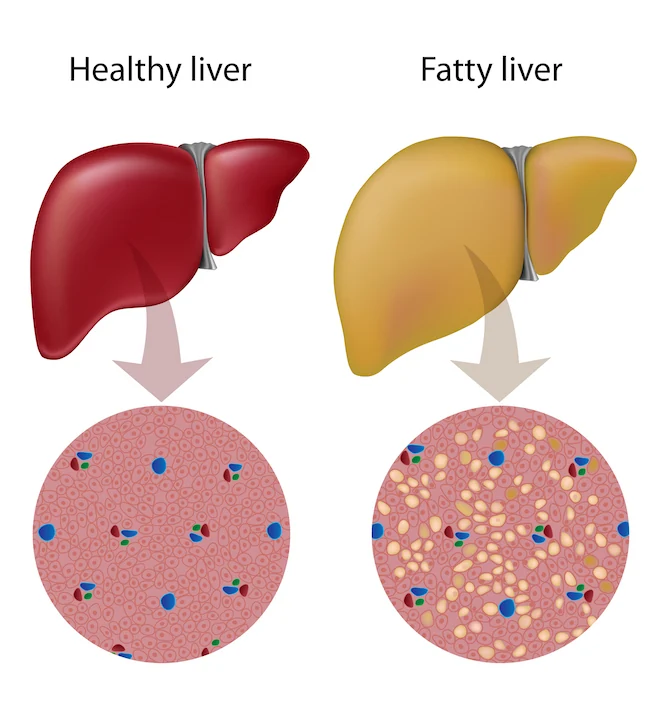Fatty Liver Disease Diagnosis & Liver Biopsy
For an accurate liver biopsy in Huntsville, visit our skilled and experienced team at Alabama Surgical Associates.
Fatty Liver Disease Diagnosis & Liver Biopsy
For an accurate liver biopsy in Huntsville, visit our skilled and experienced team at Alabama Surgical Associates.
A liver biopsy is used to diagnose fatty liver disease, which, as its name implies, is a liver with accumulations of fat within its cells. Fatty liver disease can result from excessive alcohol use, but it can also occur in people who don’t drink excessive amounts of alcohol.
Nonalcoholic fatty liver disease — also referred to as nonalcoholic steatohepatitis, or NASH, refers to those conditions that resemble alcohol-induced damage to the liver, but is found in people who don’t abuse alcohol.
Nonalcoholic fatty liver disease is very common, and often detected by a liver biopsy. While the true prevalence of this disease is unknown, some estimates suggest that 30 million obese adults in the United States may be affected. Most often, it occurs in those who are obese and who also have diabetes and elevated cholesterol and triglyceride levels (hyperlipidemia).

Types of Nonalcoholic Fatty Liver Disease
Nonalcoholic fatty liver disease includes a range of liver conditions. Some don’t harm the liver, but others may cause inflammation, scarring, or liver damage.
Simple fatty liver (steatosis) is the accumulation of fat in the liver cells. This condition usually does not damage the liver and isn’t associated with other liver abnormalities such as scarring or inflammation. Most people who have simple fatty liver have no symptoms.
Nonalcoholic steatohepatitis (NASH), the most common form of nonalcoholic fatty liver disease, is an inflammation of the liver due to the accumulation of fat. NASH may lead to cirrhosis, or scarring of the liver.
Cirrhosis is when inflammation develops and continues for years. Cirrhosis causes progressive and irreversible liver damage.
What Causes Fatty Liver Disease?
If you are diagnosed with some form of fatty liver disease, you’ll probably want to know what caused it. It’s unclear exactly how a liver becomes fatty, although obesity, hyperlipidemia, diabetes, excessive alcohol use, a poor diet, and certain drugs, such as corticosteroids, may all contribute.
The fat in a fatty liver may come from other parts of your body, or from an increase in the amount of fat absorbed from your intestine and presented to your liver. Other possible explanations suggest a slowdown in the rate in which your liver breaks down and removes fat. Eating fatty foods alone, however, won’t produce a fatty liver.
Diagnosis of Fatty Liver Disease
A biopsy and successful diagnosis involves a microscopic examination of a liver tissue sample. Occasionally, the liver is enlarged and tender upon examination, and usual laboratory features include mild elevation of liver enzymes. However, the disease is often detected because of abnormal results in unrelated tests. Fatty liver can be suspected based on an ultrasound, magnetic resonance imaging (MRI), or a computerized tomography (CT) scan.

Treatment of Fatty Liver Disease
There’s no single way to treat nonalcoholic fatty liver disease. Your best defense against fatty liver is to maintain a healthy weight, and normal cholesterol and blood sugar levels. This strategy, along with avoiding excess alcohol and other substances that could be harmful to your liver, can help reduce your risk of liver disease.
Step into Wellness: Your Path to a
Lighter, Brighter Future Starts Now
You can trust your Liver Biopsy to the skilled, board-certified surgeon at Alabama Surgical Associates (ASA) in Huntsville, AL. For more information about liver biopsy, please click below to contact our office.
Dr. Darrell Doucette has either authored or reviewed and approved this content.
Page Updated: